We’re still in the wake of Hurricanes Helene and Milton, and from the brown tips of every leaf and defoliated branch of my entire late summer garden from salty storm surge, I’m thinking of going back to Florida container gardening. Container gardening is a good place to start if you’re new to the state, or new to gardening altogether.
As a long-time Floridian, I know the challenges and joys of gardening in our unique climate. From poor sandy soil to blistering sunlight, and from overnight surprise freezes to fall hurricanes, Florida keeps gardeners on their toes.
So, if you’ve been thinking of starting a garden, or like me, thinking of making more use of containers, let’s dive in and create your dream container garden together!
Why Container Gardening is Perfect for Florida
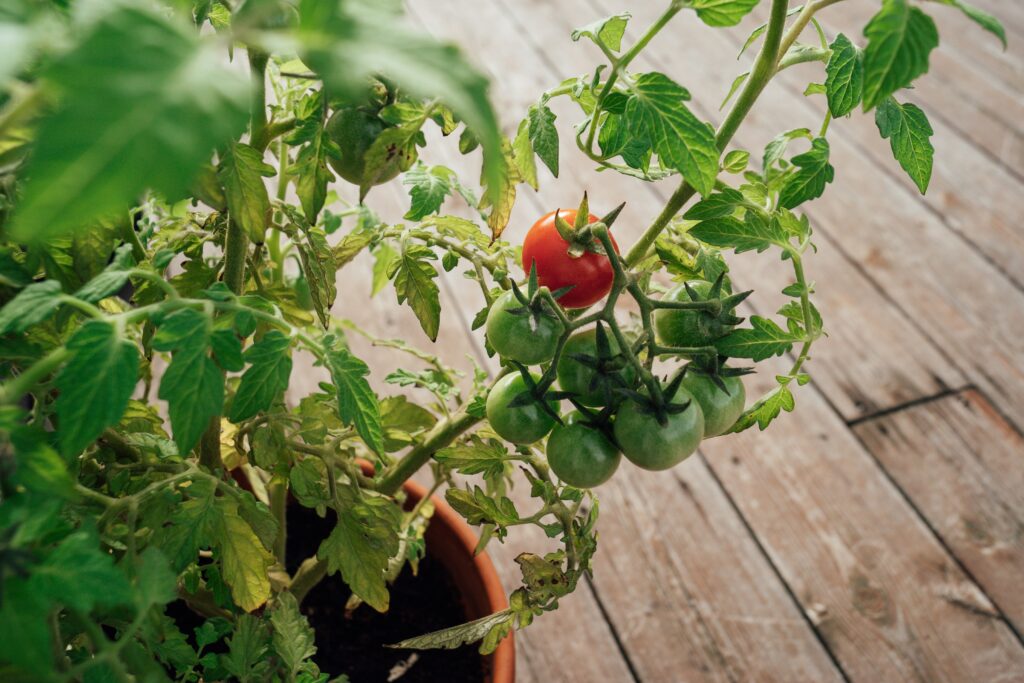
Container gardening offers flexibility for those with limited space, making it ideal for Florida. Whether you have a small patio, balcony, porch, lanai, or even just a corner of your yard, you can easily arrange pots and containers to fit the available space, giving you a versatile way to grow herbs, vegetables, and flowers.
Florida’s intense sun and heat can be tricky for plants, but with container gardening, you can move plants around to follow or avoid the sun as needed. Plus, using containers allows you to control water levels more easily, preventing plants from drying out or getting scorched.
Another benefit of container gardening in Florida is overcoming poor soil conditions. Many areas in Florida have sandy or nutrient-poor soil, which can make gardening difficult. But with containers, you can choose the perfect soil mix for your plants, ensuring they have the right nutrients and drainage.
- Nurture Healthy Plants:…
Pest control is simpler, too. Containers keep your plants off the ground, making them less vulnerable to pests that usually live in the soil. Plus, it’s easier to spot, reach, and treat any infestations quickly.
And perhaps best of all, Florida’s climate offers the chance for year-round gardening. Container gardening lets you take full advantage of this, planting different crops and flowers throughout the year without worrying about seasonal limitations. It’s easy to cover a container or even move it into shelter during a hurricane or overnight frost.
Essential Supplies for Florida Container Gardening
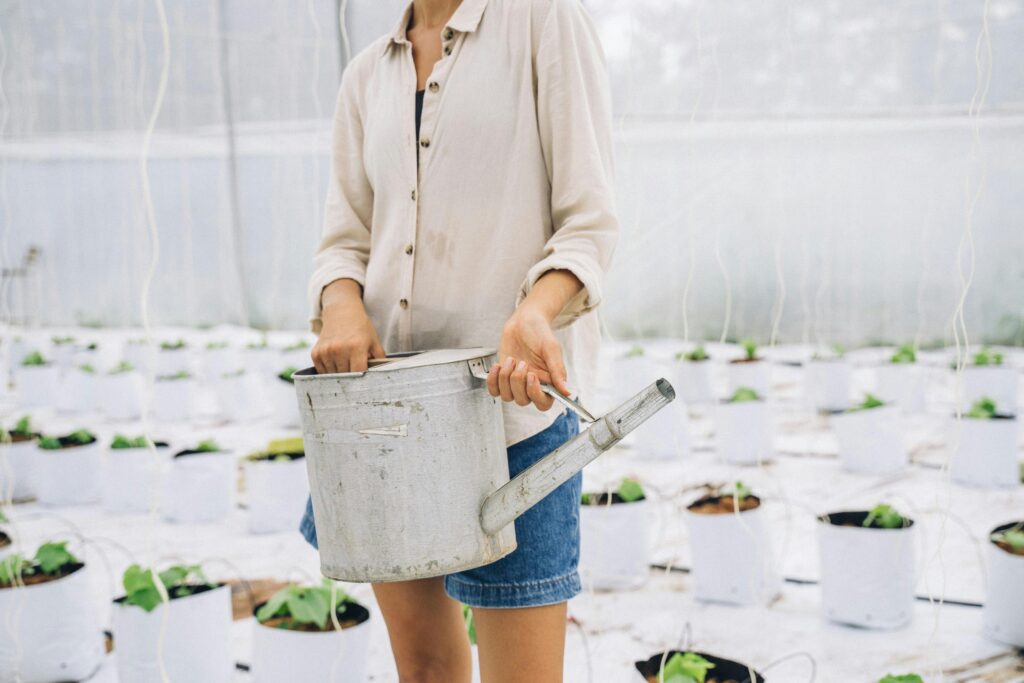
Choosing the right supplies for Florida container gardening is key to helping your plants thrive in the Sunshine State’s unique climate.
First, selecting the right containers is essential. Look for pots that can withstand Florida’s intense heat and humidity. Ceramic, plastic, or fiberglass containers work well since they retain moisture better than terra cotta, which tends to dry out quickly in the heat. Make sure your containers have drainage holes to prevent water from pooling and causing root rot.
PROTIP
Protip: If you can, avoid using dark-colored containers in the summer, especially in South Florida. Those black planters are great in cooler climates but can bake the roots when exposed to the sun. I use a combination of both light and dark-colored containers for different times of the year and different purposes.
Next, using the best potting mix is important for container gardening in humid climates like Florida’s. Regular garden soil can compact and hold too much water in containers, so look for a light, well-draining mix specifically designed for pots. A mix with added perlite or vermiculite will help with aeration and drainage, keeping your plants happy even on the most humid days.
When it comes to feeding your plants, fertilizers and nutrients are a must. Since plants in containers have limited soil and nearly no access to local microbiology, they need a steady supply of nutrients to keep growing strong. Choose a balanced, slow-release fertilizer to mix into your potting soil, and supplement with liquid feed during the growing season to give your plants a boost.
Watering tools and moisture meters are also important. Florida’s heat means frequent watering, but it can be tricky to know when your plants need it. A moisture meter can help you avoid over- or under-watering by giving you an accurate reading of the soil’s moisture levels. Drip irrigation systems or self-watering pots are also great options to keep your plants consistently hydrated.
Finally, protecting your plants from Florida’s intense sun is essential. While many plants love sunlight, too much can cause sunburn or stress. If your pots are too heavy to move into a shadier spot, consider adding shade cloths, umbrellas, or moveable screens to provide relief during the hottest parts of the day.
You can even place more sun-tolerant specimens in front of more delicate ones to block the sun. I often plant scorch-sensitive plants in containers under banana circles for protection from both the sun and wind. This flexibility helps keep your container garden thriving year-round.
Choosing the Right Edible Plants for Florida Container Gardening
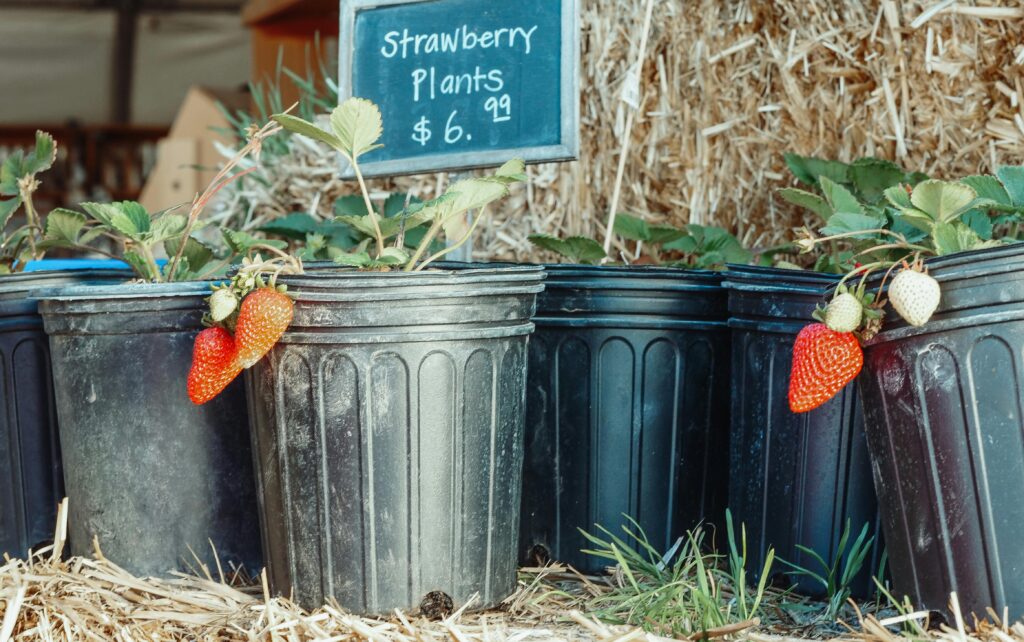
Container gardening opens up a world of possibilities for growing edibles on your Florida property, and with improvements in container sizes—like larger pots, grow bags, and raised beds—you can now grow an impressive variety of fruits, vegetables, and herbs.
Florida’s warm climate is ideal for growing a wide range of vegetables in containers. Leafy greens like kale, spinach, and arugula can thrive in the cooler months, while heat-tolerant vegetables like peppers, tomatoes, eggplant, and okra can grow year-round with proper care.
Root vegetables, such as carrots, radishes, and beets, also do well in deeper containers or grow bags. Even potatoes can be grown in specialized grow bags designed for easy harvesting.
I grow both Irish and sweet potatoes in old cardboard boxes.
Herbs are another great option for Florida container gardens. Basil, rosemary, thyme, mint, and parsley love the Florida warmth, and they grow beautifully in pots or small raised beds. It also helps keep them from sitting in soggy soil during our rainy season.
You can place herbs right by your kitchen door for easy access, making them a practical and attractive addition to your patio.
Fruit Trees in Containers
Thanks to larger containers, you’re no longer limited to small crops. Dwarf fruit trees, like citrus, figs, and avocados, can be grown in large pots or raised beds, producing fresh fruit right on your patio. Citrus trees, such as Meyer lemon, key lime, and calamondin, thrive in Florida’s sun. They’re also easy to maintain in containers. Figs, like ‘Petite Negra’ or ‘Brown Turkey,’ are also excellent choices for pots. You’ll get a good harvest in a compact space.
Berry bushes are another great addition to container gardens. Blueberries and strawberries all do well in pots, with blueberries especially suited to containers if you use the right acidic potting mix. For strawberries, consider hanging baskets or shallow containers. These allow the berries to spill over the sides, keeping them from rotting from contact with the soil and making them easier to harvest.
With grow bags and raised beds, you can easily grow larger crops that were once thought too big for containers. Squash, zucchini, cucumbers, and even pumpkins can flourish in these flexible setups, as long as you provide enough space for the vines to spread or use vertical supports like trellises. You’ll want at least 5-gallon size containers for these vegetable plants.
By combining a variety of these plants in containers, grow bags, or raised beds, you can create a thriving edible garden in small spaces, and without spending three years “fixing” the soil. You’ll get fresh produce year-round with the flexibility to move and adjust plants as needed for Florida’s unique climate.
Choosing Flowering Plants for Your Florida Patio Containers
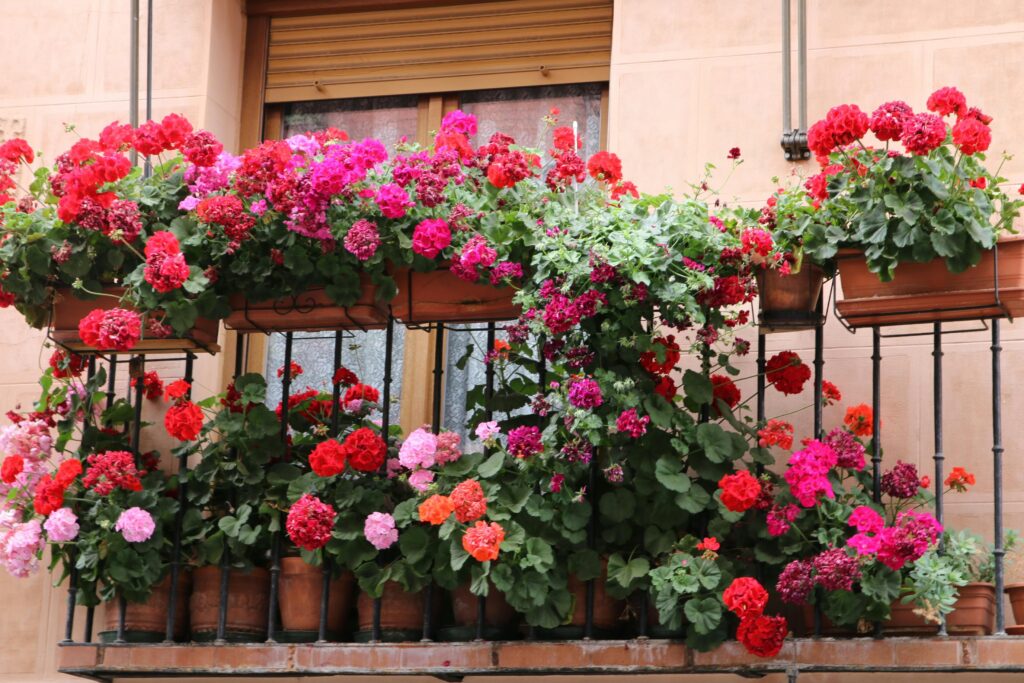
Flowering plants bring vibrant color and life to Florida container gardening, and many thrive in pots and planters, making them perfect for small spaces or patios.
Besides, they’re your best defense against pest insects and best strategy for good pollinator for your edible garden.
For heat-tolerant flowers, try pentas, marigolds, or zinnias. These resilient plants easily handle Florida’s intense sun, providing bright, long-lasting blooms.
If you’re looking for something lower maintenance, bougainvillea and hibiscus both thrive in containers and add a beautiful splash of color.
For a mix of color and fragrance, consider jasmine or gardenia, both of which are well-suited to pots and add a sweet scent to your patio. Whether you prefer big, showy blooms or delicate flowers, there are plenty of container-friendly flowering plants to enhance your Florida garden.
Step-by-Step Guide to Planting Your Container Garden
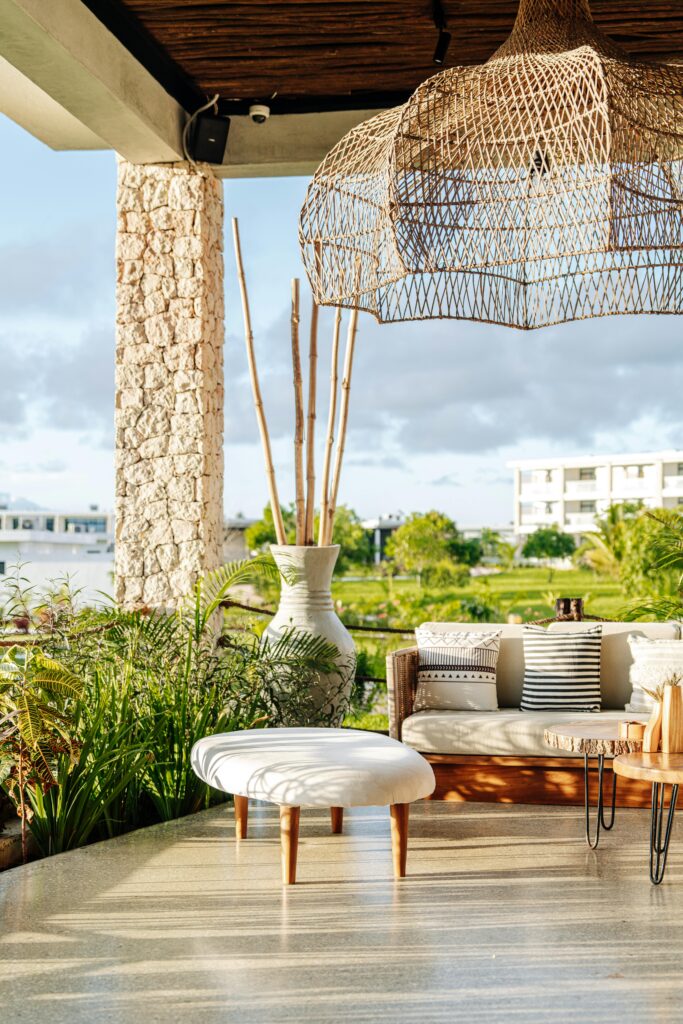
Container gardening is a fun and flexible way to grow plants on your Florida patio. Whether you’re planting vegetables, flowers, or herbs, following these steps will help ensure your plants thrive.
1. Preparing Your Containers: Drainage and Soil Considerations
The first step is to make sure your containers are ready. Drainage is key—your pots need drainage holes to prevent water from pooling and causing root rot. If your containers don’t have holes, you can drill some in yourself.
Next, focus on the soil. Never use garden dirt in containers—it’s too dense and can hold too much moisture. Instead, choose a high-quality potting mix designed for containers. Look for a mix that’s light, airy, and well-draining, often with added perlite or vermiculite to improve aeration. If you’re planting edibles, consider adding organic compost or vermicompost to enrich the soil.
2. Proper Planting Techniques for Container Gardens
When you’re ready to plant, gently remove each plant from its nursery pot, taking care not to damage the roots. If the roots are tightly wound (root-bound), loosen them by gently teasing them apart with your fingers.
Plant each one at the same depth it was growing in its original container. Make sure not to plant too deep or leave roots exposed. When adding soil around the plant, lightly press it down to remove air pockets, but don’t pack it too tightly—it should still be loose enough for roots to spread easily.
3. Arranging Plants for Aesthetic Appeal and Optimal Growth
Arranging your plants is both about beauty and making sure they have enough space to grow. For aesthetic appeal, mix and match different heights, textures, and colors. Taller plants like tomatoes or eggplant should go in the back or center, with medium-height plants around them, and trailing plants like sweet potato vines or nasturtiums cascading over the edges.
When it comes to growth, make sure you choose plants with similar water, light, and soil needs to ensure they all thrive together. Be mindful of spacing—cramming too many plants into a container can restrict growth, so give each plant enough room to expand.
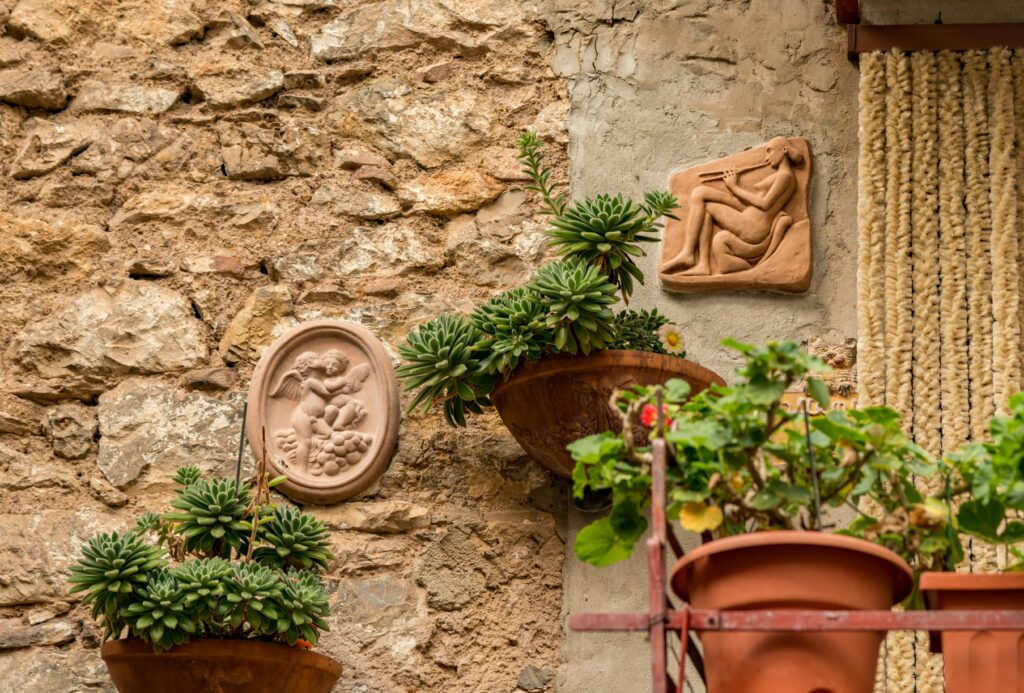
4. Initial Watering and Fertilizing Tips
After planting, give your container garden a thorough watering to help the soil settle and eliminate air pockets. Water until it runs out of the drainage holes, but don’t let your plants sit in standing water.
Since nutrients in container soil are quickly depleted, it’s a good idea to add a slow-release fertilizer to the soil at planting time. This will give your plants a steady supply of nutrients over the coming weeks. My favorite is Espoma Bio-Tone Starter Plus, which helps increase root growth.
- FOR EVERYTHING YOU PLANT: Use Bio-tone Starter Plus fertilizer when planting / transplanting all plants.
You can also start using a liquid fertilizer about two to four weeks after planting for an extra boost or when they start to flower, especially for edibles.
5. Acclimatizing Plants to Their New Environment
Plants can experience shock when moved to a new environment, especially if they’re going from a nursery or indoors to your outdoor patio or deck. To prevent this, take some time to acclimatize your plants.
Start by placing your containers in a shaded spot for a few days before gradually introducing them to more sunlight. For sun-loving plants, move them into direct sun for short periods each day, increasing the time over about a week. This gradual process helps plants adjust to the heat and light without getting stressed or sunburned.
By following these steps, you’ll set your container garden up for success, creating a thriving, beautiful space on your Florida patio!
Maintaining Your Florida Container Garden
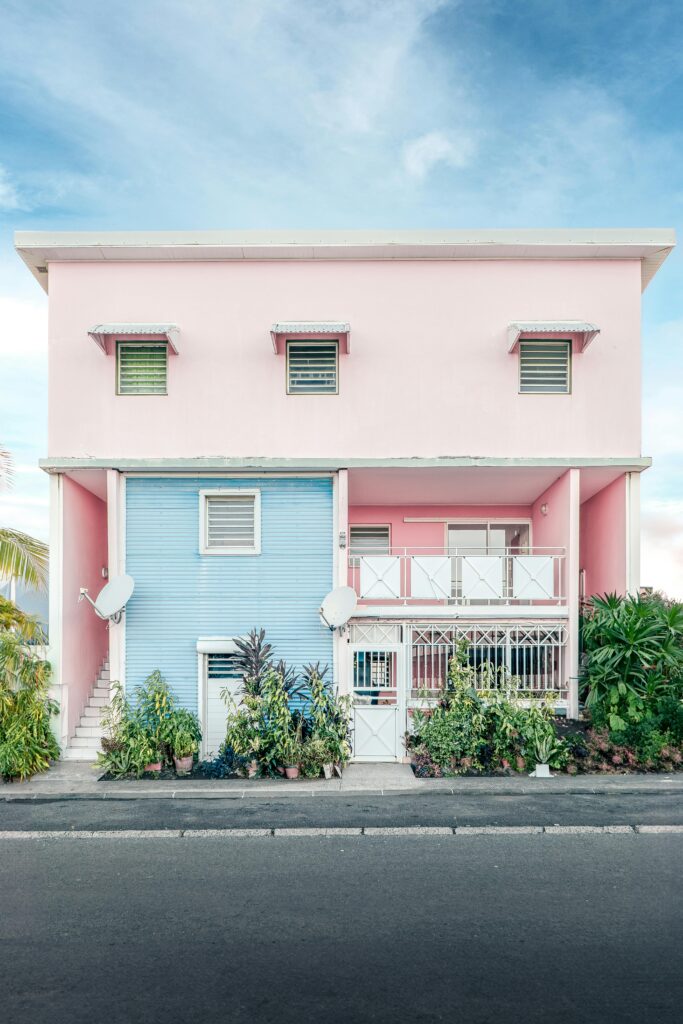
Keeping your Florida container garden healthy and thriving requires regular care, especially with the state’s hot, humid climate and occasional weather changes. Here’s how to maintain your container garden all year round.
1. Watering Schedule for Florida’s Hot and Humid Climate
Watering is one of the most important tasks for container gardening, especially in Florida’s heat. In hot, dry weather, containers can dry out quickly, so you’ll likely need to water daily during the late spring and summer months. The key is consistency—plants should be watered when the top inch of soil feels dry.
Water in the morning whenever possible to help plants absorb moisture before the hottest part of the day and to prevent fungal issues from developing in the evening humidity.
Use a watering can with a gentle spout or drip irrigation to avoid washing away soil or damaging roots. Also, keep an eye on rain—while Florida has frequent downpours, containers often still need supplemental watering, as rain may not penetrate deeply enough into the container soil.
- Adjustable Water Flow:…
2. Fertilizing Routines for Container Plants
Because plants in containers have limited access to nutrients and soil biology that helps them absorb those nutrients, they require more frequent feeding than those planted in the ground. Start by mixing a slow-release fertilizer into the soil at planting time to provide nutrients over an extended period.
For ongoing care, use a balanced liquid fertilizer every two to four weeks, depending on the plant’s needs. You can also “top up” slow-release feed by working it gently into the top two or three inches of the soil.
- Promotes healthy plant growth…
- Can be used on all indoor and…
- 100-percent organic
- Will Not Burn
- Great for all plants
- Deodorized with Natural…
- Fish-based fertilizer for use…
- Excellent for use on flowers,…
- OMRI listed
Flowering plants may benefit from a bloom-boosting fertilizer with higher phosphorus, while leafy vegetables and herbs may thrive with a nitrogen-rich option. Be careful not to over-fertilize, as this can lead to salt buildup in the soil, which can damage plants. Flush the soil occasionally with water to clear out any excess salts, especially if you notice white crusts forming on the surface.
3. Pruning and Deadheading for Healthy Growth
Regular pruning and deadheading help keep your plants healthy and looking their best. Deadheading — removing spent flowers — encourages plants like marigolds, zinnias, and pentas to keep blooming throughout the season. It also prevents the plant from putting energy into producing seeds.
For fruiting plants like tomatoes or peppers, pruning can help improve airflow and sunlight exposure, reducing the risk of disease and encouraging stronger fruit production. Remove any yellowing or damaged leaves and thin out crowded areas to prevent plants from becoming overgrown. For herbs like basil or mint, frequent harvesting (by pinching off the tops) encourages bushier growth and prevents them from becoming leggy.
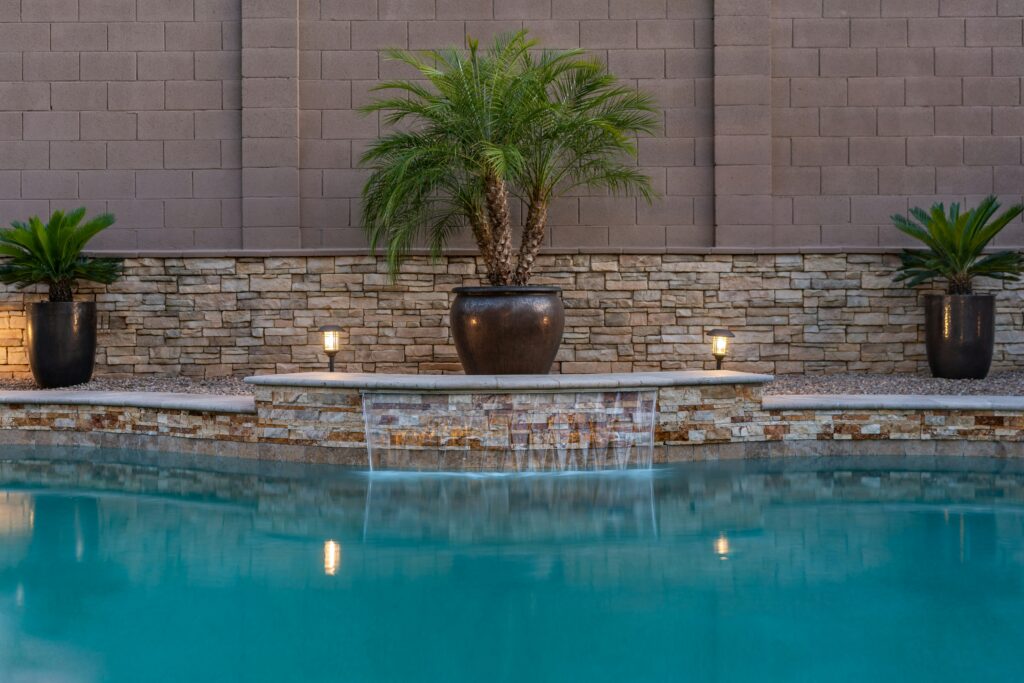
4. Pest and Disease Management in Container Gardens
Florida’s humid climate creates a perfect environment for pests and diseases, so proactive management is essential. Aphids, whiteflies, and spider mites are common pests that can infest container plants, so check your plants regularly for signs of trouble. Neem oil or insecticidal soap are safe, eco-friendly treatments that can keep these pests at bay. Although I admit that I haven’t found Neem to be anywhere as effective as Spinosad and Bt.
Fungal diseases, such as powdery mildew or root rot, can be a problem in Florida’s humidity. To prevent this, make sure your containers have good airflow and avoid overhead watering. If you notice leaves developing spots or powdery coatings, remove the affected parts and treat the plant with a fungicide if necessary.
Preparations containing “D747” (Bacillus amyloliquefaciens) is an effective fungal disease preventative. They’ve also been shown to improve plant nutrient uptake.
Those with copper sulfate are a bit more effective for treating plants with existing infections.
5. Seasonal Care: Protecting Plants from Occasional Cold Snaps
While Florida’s climate is warm most of the year, occasional cold snaps can surprise gardeners in the winter months. For tropical plants or sensitive edibles, it’s important to be prepared. Keep an eye on the weather forecast and be ready to move containers indoors or into a sheltered area if a frost is expected.
For larger containers that can’t be moved, you can use frost blankets, old sheets, or even bubble wrap to cover and insulate the plants overnight. Remember to uncover them in the morning to let the sunlight in. Grouping containers together can also help protect them, as they’ll share warmth.
By following these maintenance tips, you’ll keep your Florida container garden healthy and productive all year long, no matter what the weather brings!
Troubleshooting Common Container Gardening Issues in Florida
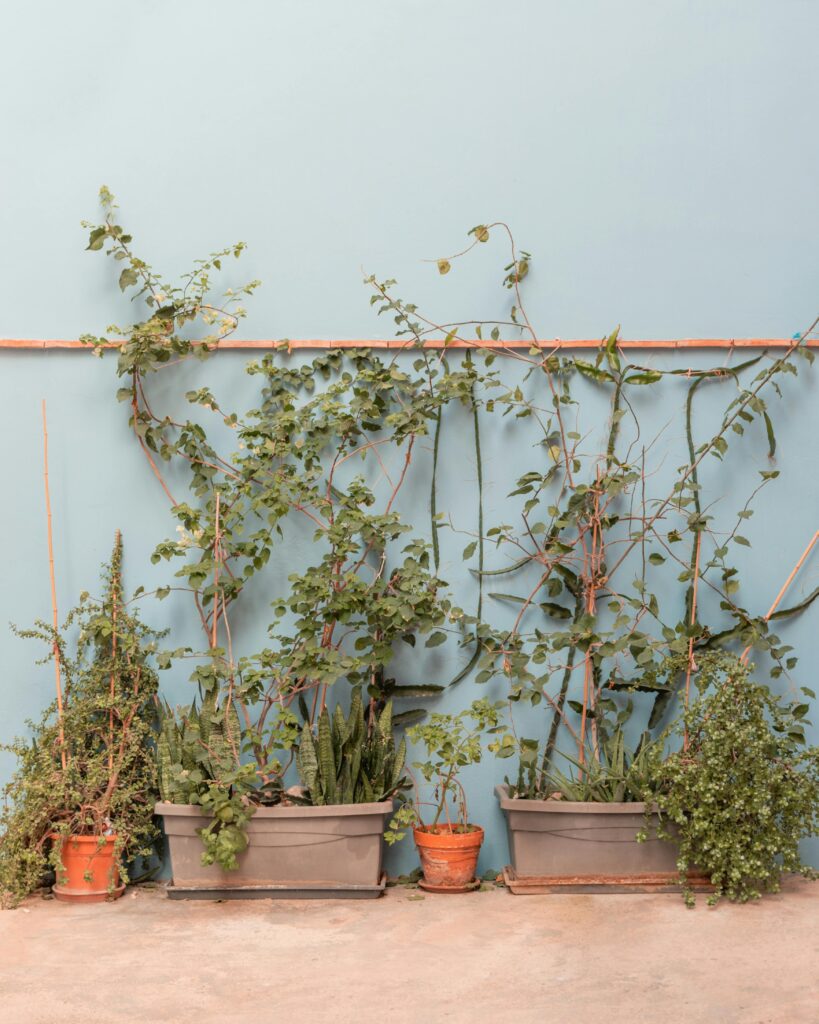
Container gardening in Florida offers many benefits, but it also comes with challenges, especially with the hot, humid climate. Here’s how to tackle some of the most common issues that can affect your container plants, along with step-by-step solutions.
1. Dealing with Root Rot and Overwatering
Root rot is a common issue in Florida’s humid climate and is often caused by overwatering or poor drainage in containers.
- Check for proper drainage. Make sure your containers have enough drainage holes. If water isn’t draining well, drill more holes or repot the plant in a container with better drainage.
- Remove affected plants from their containers. Gently pull out the plant and inspect the roots. Healthy roots should be white or light-colored, while rotting roots will be brown, mushy, and may smell bad.
- Trim off any diseased roots using clean, sharp scissors or pruners. Disinfect your tools afterward to avoid spreading disease.
- Repot the plant in fresh, well-draining potting mix. You can mix in perlite or sand to improve drainage and aeration.
- Adjust your watering schedule. Only water when the top inch of soil feels dry, and avoid letting the pot sit in standing water.
2. Combating Nutrient Deficiencies in Container Plants
Plants in containers rely solely on the nutrients in their potting mix, which can become depleted quickly.
- Identify the deficiency. Common signs include yellowing leaves (nitrogen deficiency), purplish stems or leaves (phosphorus deficiency), or pale new growth (iron deficiency).
- Use a balanced liquid fertilizer, or one that’s tailored to the specific nutrient deficiency. For nitrogen, use a fertilizer high in nitrogen; for phosphorus or iron, choose a specialized product.
- Follow the label instructions carefully to avoid over-fertilizing, which can harm your plants. Fertilize every two to four weeks during the growing season.
- Consider adding organic compost to your potting mix to provide a slow-release source of nutrients.
3. Managing Salt Buildup in Containers
Salt buildup can occur from repeated fertilization, especially in Florida’s humid climate, leading to crusty white deposits on the soil surface or leaf tips turning brown.
- Check for signs of salt buildup, such as white crusts on the soil or leaf edges browning.
- Flush the container with fresh water. Water your plant thoroughly until the water runs out of the drainage holes. This helps wash excess salts out of the soil.
- Avoid over-fertilizing, and consider using a slow-release fertilizer to minimize salt accumulation.
- Repeat the flushing process every few weeks if you use tap water, as it can also contain salts and minerals that build up over time.
4. Addressing Heat Stress and Sunburn on Plants
Florida’s intense sun can cause heat stress or sunburn on sensitive plants, leading to wilting, scorched leaves, or stunted growth.
- Move your containers to a shadier location during the hottest part of the day, especially during the summer. Partial shade or filtered light works well for many plants, especially in Florida.
- Use shade cloth or patio umbrellas to protect plants from direct sunlight. This is especially helpful for delicate flowers or vegetables that can’t tolerate extreme heat.
- Mulch the top of the soil in your containers to help retain moisture and cool the roots. Organic mulch like straw or bark works well.
- Water more frequently, but ensure you aren’t overwatering. During extreme heat, plants may need water twice a day, but always check the soil moisture before watering.
5. Handling Pest Infestations Unique to Florida
Florida’s warm climate attracts a range of pests like aphids, whiteflies, and spider mites, which can be especially problematic for container gardens.
- Inspect your plants regularly for signs of pests, such as yellowing leaves, small holes, or a sticky substance (honeydew) on the leaves.
- For light infestations, use a strong stream of water to dislodge pests from the plants. Make sure to get the undersides of leaves, where pests often hide. This is particularly effective on aphids.
- Apply insecticidal soap or organic pest treatment to treat more serious infestations. These options are safe for plants and non-toxic to beneficial insects.
- Encourage beneficial insects like ladybugs and lacewings by planting companion plants like dill, fennel, or marigolds. These insects naturally help control pest populations.
- If aphids are the problem, make sure you treat for ants too. Ants will “farm” aphids, protecting them from predators in order to harvest the “dew” they produce. I use simple ant baits with sodium borate (Borax) and sugar to restore the balance in my garden.
- Keep your plants healthy. Stressed plants are more susceptible to pests, so proper watering, fertilizing, and pruning can go a long way in preventing infestations.
By following these steps, you can troubleshoot and overcome the most common container gardening challenges, ensuring your Florida patio garden stays vibrant and healthy throughout the year.
Beware: Florida Container Gardening is a Gateway Drug
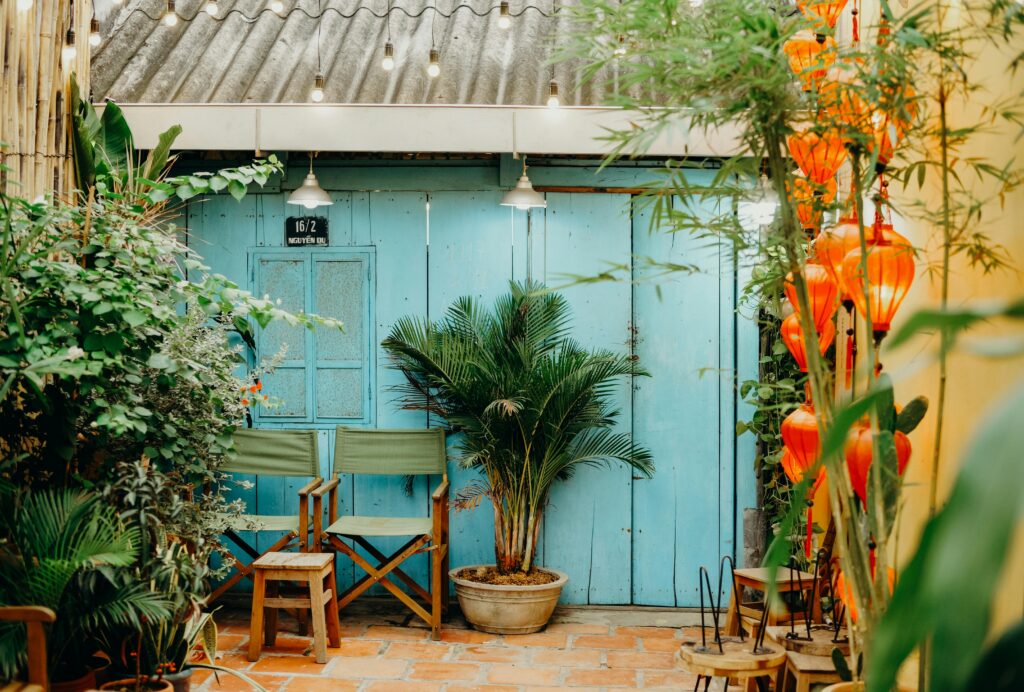
You’re now equipped with all the knowledge you need to create a stunning container garden on your Florida patio. Remember, gardening is a journey, not a destination.
You may soon find yourself dissatisfied by the limited amount of space they provide. Soon, you may be looking to add raised beds or even testing your soil as the first step to growing in-ground.
But remember, Florida container gardening can offer you the best guarantee of horticultural or agricultural success. In a state beset by storms, floods, sandy soil, and saline spray, don’t give up on your pots of tomatoes or flower planters, even if you decide to expand.
Your patio will soon become your favorite spot — a peaceful retreat where you can relax, surrounded by the beauty of nature. So grab those containers, pick your plants, and let’s get growing! Your Florida patio paradise awaits!
Last update on 2025-08-06 / Affiliate links / Images from Amazon Product Advertising API
This product presentation was made with AAWP plugin.






1 thought on “Container Gardening for Beginners: A Complete Guide to Florida Container Gardening”
Comments are closed.